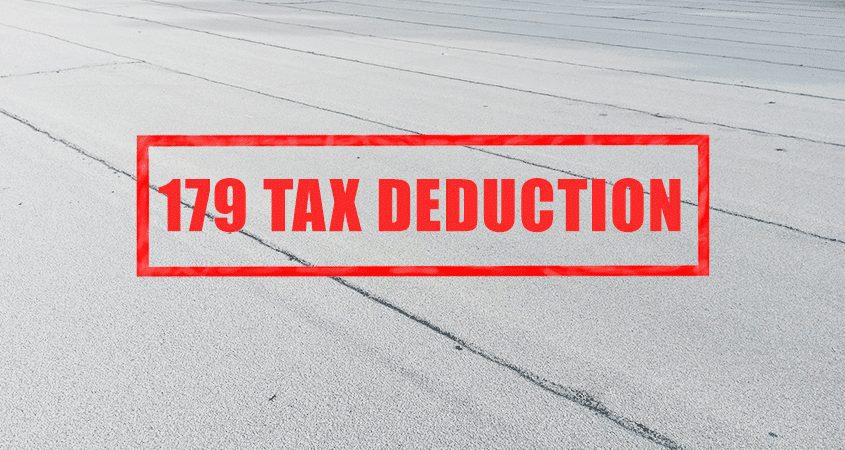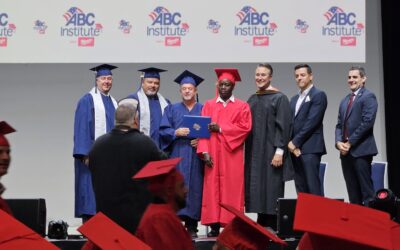
Section 179D Tax Deduction for Commercial Roof Replacements
Businesses can now deduct the full cost of a roof replacement in the year it’s completed instead of depreciating over 39 years using the Section 179D tax deduction
Read the Updated Article for 2020
Great news for re-roofing projects in 2018! The Tax Cuts and Jobs Act approved by Congress in December 2017 includes a provision that reduces the overall cost associated with re-roofing projects and significantly improves the cost-effectiveness of commercial roof replacements that comply with building energy codes. Many commercial building owners expect they will able to afford to replace or repair damaged roof systems because they’ll be able to recoup the cost of the reroofing project when they file their taxes.
5 Reasons Why 179D Tax Deduction is Important News for Roofing Projects:
- Allows businesses to deduct depreciable equipment – including the cost of re-roofing projects – as an immediate write-off against that year’s earnings, up to the full replacement cost.
- Permits businesses to deduct the full cost of their roof replacement in the year completed instead of depreciating over 39 years, as was required under previous law.
- Shortens the average payback period on the cost of installing code-required insulation by 3.5 years: from 11.6 years to 8.1 years, a 21% net savings for C-Corps and 35% for most profitable S-Corps and LLC’s.
- Raises the maximum amount a business may expense up to $1 million and increases the phase-out threshold to $2.5 million.
- Following is more information about Section 179 and the provision to add commercial roofs as qualifying property as of Jan. 1, 2018. This information can help you determine if you may be eligible for this preferential tax treatment for improvements to your roof.
About Section 179D Tax Deduction for Roof Replacements
Section 179D allows taxpayers to immediately expense the cost of qualifying property rather than recovering such costs over multiple years through depreciation. The Tax Cuts and Jobs Act significantly expands the expensing limits under Section 179, with the maximum amount a business may expense now set at $1 million and the phase-out threshold increasing to $2.5 million. These new limits are effective for qualifying property placed in service in taxable years beginning after Dec. 31, 2017, and the amounts will be indexed for inflation starting in 2019.
Who Can Qualify for 179D Tax Deduction
The 179D tax deduction is available to building owners and lessees that make eligible energy-efficient improvements to their commercial buildings, which can include:
- Retail buildings
- Office buildings
- Industrial buildings
- Apartment buildings (at least 4 stories)
- Industrial/ Warehouses
How to Qualify for 179D Tax Deduction
According to the Alliant Group, a building can qualify for the 179D tax deduction if energy-based improvements are made to the air conditioning system, lights, or the building’s envelope like the roof. Additionally, the enhancements to these systems must surpass ASHRAE 2001 standards for buildings placed into service before 2016 and ASHRAE 2007 standards thereafter.
There are multiple methods of securing 179D and different levels of deductions depending on the energy efficiency levels that your project meets. Energy consumption cost reductions of as little as 10%, in some cases, can result in very substantial tax savings.
It’s critically important that taxpayers examine and exhaust all of the partial and fractional qualification methods to maximize their benefit.
More Information
Please contact your tax professional if you have questions regarding how you can take advantage of this favorable tax treatment for improvements to commercial roofs in 2018.
Tags:
You may also like
Hurricane Damage and The Claim Process
Hurricane Damage and The Claim Process If your commercial property has experienced hurricane roof damage, planning a comprehensive recovery strategy is essential to ensure your building returns to its pre-storm condition. At Advanced Roofing, we specialize in...
2024 ABC Roofing Apprenticeship Graduation
Being a founding member of the American Builders and Contractors Institute (ABC) Roofing Apprenticeship Program, Advanced Roofing is excited to announce the graduation of the 2024 ABC apprenticeship program class. This is a huge milestone in your careers, and we...
Emergency Roofing Solutions for Florida Businesses: Finding a Reliable Commercial Roof Repair Contractor
IntroductionFinding a Reliable Commercial Roof Repair ContractorFlorida's weather conditions are unpredictable, representing a great challenge for companies, mainly when roofing emergencies occur. For this reason, being prepared to deal with unexpected roof problems...



